How Goes the American Dream?

Despite the massively arduous path to permanent residency with inhumane levels of delays and backlogs, rising racism, and more that is stacked up against many Indian immigrants, the dream endures and America remains a beacon of hope.
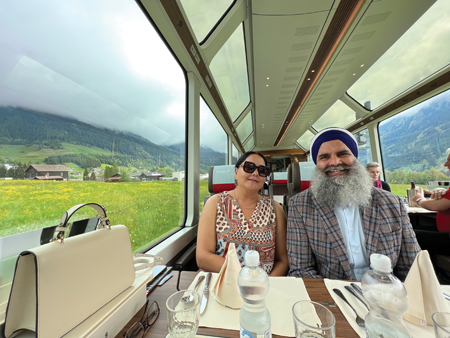 In the summer of 1996, a young, 20-something Gurinder Singh Khalsa, a student at the Panjab University in India, got a rare opportunity. He was invited by the U.S. Department of the Interior to present his paper at the Destructive Water Conference in Anaheim, California. For Khalsa, who hails from a small village in Haryana, the invitation opened a world of newer possibilities.
In the summer of 1996, a young, 20-something Gurinder Singh Khalsa, a student at the Panjab University in India, got a rare opportunity. He was invited by the U.S. Department of the Interior to present his paper at the Destructive Water Conference in Anaheim, California. For Khalsa, who hails from a small village in Haryana, the invitation opened a world of newer possibilities.
[Right] Gurinder Singh Khalsa with his wife.
With a hundred dollars in his pocket and a heart full of anxiety, he set foot in a place he had heard about as being “a land of dreams.” Khalsa did dream big. Impressed with the academic possibilities in the United States, he became a postgraduate student at UC Berkeley to study business finance. Over the years, he finished his masters, worked in corporate America, launched small businesses, and assimilated himself into American life.
Today, 25 years later, Indiana-based Khalsa is a successful entrepreneur who owns over 20 gas stations, several truck plazas, and strip malls across multiple U.S. cities. He is the founder of SikhsPAC, America’s first political action committee for Sikhs; has contested local city elections; and is a recipient of the Rosa Parks Trailblazer Award.
On being asked what he thinks about the American Dream, Khalsa says, “America itself is a dream!” He adds, “America is perhaps one of the few countries that give their citizens three most important aspects of life—dignity, security, and economic possibilities. Sure, it is not perfect, but then no place is. Despite its flaws, for millions of young men and women from countries around the world, the idea of America is so inspiring that they push themselves to excellence to make a place for themselves in this country.”
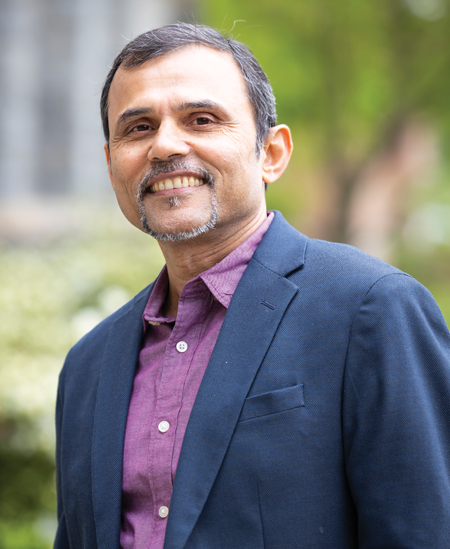
[Right] Sangay Mishra, author of Desis Divided: The Political Lives of South Asian Americans.
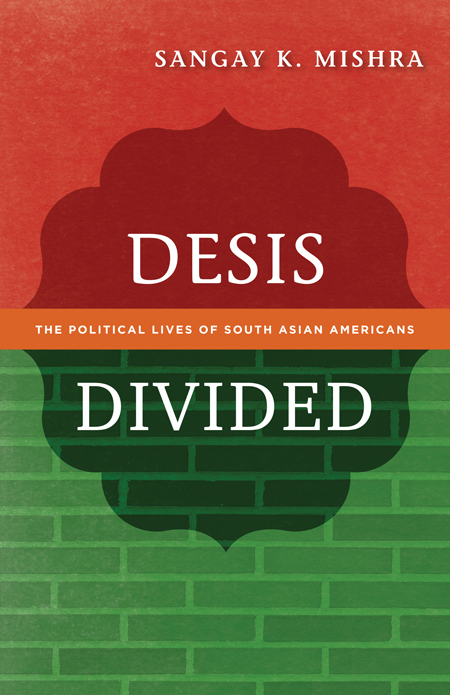 Khalsa’s success is quite representative of a majority of Indian Americans. This is not to say that there aren’t those Indian immigrants for whom their American journey has been nothing but challenging. An assistant professor of political science at Drew University, Sangay Mishra is the author of Desis Divided: The Political Lives of South Asian Americans. Providing a scholarly context, he says, “The American Dream has always been a kind of mythical narrative about the nation and how everyone can achieve it. If we look at the trajectory of immigrant successes, most of the early European immigrants from places like Italy, Poland, Germany, etc. came as a working-class populace when the U.S. economy was growing. They traveled to America trying to move up the ladder. The idea was used by the political system to attract Indians who then started coming mostly as tech professionals and found themselves in comfortable financial situations. However, other minority groups, like the Black Americans or the Latino immigrants, had a different trajectory. So, the idea of the American Dream is contentious.”
Khalsa’s success is quite representative of a majority of Indian Americans. This is not to say that there aren’t those Indian immigrants for whom their American journey has been nothing but challenging. An assistant professor of political science at Drew University, Sangay Mishra is the author of Desis Divided: The Political Lives of South Asian Americans. Providing a scholarly context, he says, “The American Dream has always been a kind of mythical narrative about the nation and how everyone can achieve it. If we look at the trajectory of immigrant successes, most of the early European immigrants from places like Italy, Poland, Germany, etc. came as a working-class populace when the U.S. economy was growing. They traveled to America trying to move up the ladder. The idea was used by the political system to attract Indians who then started coming mostly as tech professionals and found themselves in comfortable financial situations. However, other minority groups, like the Black Americans or the Latino immigrants, had a different trajectory. So, the idea of the American Dream is contentious.”
A nation of immigrants... still?
Immigration has played a key role in transforming America into a successful urban, industrial economy. Indian Americans, who now form the largest Asian American group in the U.S., began arriving in larger numbers after the Immigration and Nationality Act of 1965. The expansion of employment-based immigration, educational opportunities, and the introduction of temporary visa programs for skilled professionals created a never-before influx of Indians in America. This new wave saw immigrants who were highly educated, worked in management positions, and had a much higher median income than average Americans. The Indian immigrant to America usually led a successful, stable, and substantially well-off life.
But over the decades, with Indians continuing to bag a majority of the work-based H-1B visas, and becoming one of the top groups enrolling in American colleges, the green card quotas for Indians began bursting at the seams. And this led to some incredulity around the American Dream, especially for Indians on temporary work visas. These are folks who have invested the prime of their lives in helping build the American economy and whose children have grown up with American identities but are now being denied a path to permanent residency (PR), let alone citizenship.

The dimming Indian experience?
A latest study by the libertarian think tank, Cato Institute, puts the spotlight on the fallacy of the American Dream in current times, particularly for high-skilled Indians. The study succinctly spells out the worst—400,000 Indians will die waiting for a green card. Of the total 1.8 million cases of green card backlog, 63 percent—a total of 1.1 million—are from India. For new visa applicants from India in the EB-2 and EB-3 categories, the wait time for the American PR is 134 years—much longer than a human life span! Despite this, the H-1B visas for fiscal year 2023 saw 484,000 registrations for a quota that is fixed at 85,000. In 2022, 72.6 percent of the total H-1Bs allotted went to Indians.
Immigration challenges, experts say, have started dimming the picture of hope in America. Emily Neumann, an immigration attorney at the Texas-based Reddy & Neumann, P.C., says, “For Indians, the situation appears fundamentally unfair, especially as it is determined by something as arbitrary as their country of birth. This discrepancy is not just a matter of lengthy processing times—it symbolizes a deeper issue of inequity. The fact that even highly skilled and accomplished professionals from India, including potential Nobel laureates, face at least a seven-year wait for a green card, while their counterparts from other countries do not, is a glaring example of this systemic imbalance.”
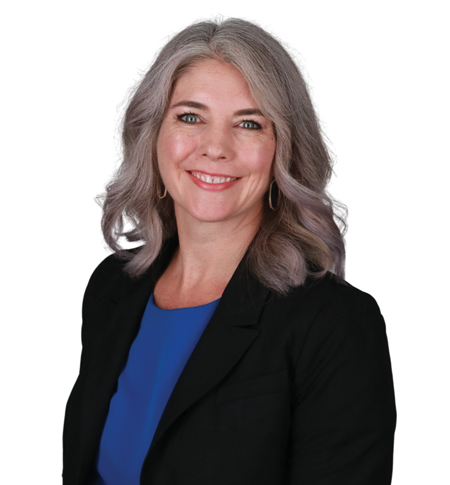 Over 250,000 legal immigrant children face the possibility of self-deportation. Most of them are children of Indian H-1B visa holders. Dip Patel founded Improve the Dream, an organization that advocates for DREAMers—those who grow up as dependents of long-term visa holders but lose their legal standing as soon as they hit age 21. The advocacy by his organization, along with many others, has resulted in the introduction of bipartisan bills such as the America’s Children Act.
Over 250,000 legal immigrant children face the possibility of self-deportation. Most of them are children of Indian H-1B visa holders. Dip Patel founded Improve the Dream, an organization that advocates for DREAMers—those who grow up as dependents of long-term visa holders but lose their legal standing as soon as they hit age 21. The advocacy by his organization, along with many others, has resulted in the introduction of bipartisan bills such as the America’s Children Act.
[Left] Emily Neumann, an immigration
attorney based in Texas, says, “For Indians, the situation appears fundamentally unfair, especially as it is determined by something as arbitrary as their country of birth.”
Patel’s advocacy was borne out of his personal struggles. India-born Patel moved to Canada with his parents when he was a toddler. He became a Canadian citizen and moved to the U.S. as a fifth grader on an E-2 visa. While in high school, he realized that as a dependent, his status in America was different as compared to other kids. “Since I couldn’t get my permanent residency sooner owing to my Indian origin, it limited my choices as a student. I was not eligible for in-state tuition.”
It was during this time that Patel began learning more about the immigration loopholes in the American system and became an activist for the cause. On why these kids continue to strive for the American Dream despite the unfair treatment meted out to them, he says, “For most of these kids like me, America is the only home they have known. We grew up here and fell in love with America as any other kid naturally born here.”
America——a lottery?
The International Migration Outlook report for 2023 by the Organization for Economic Co-operation and Development (OECD) shows that Indians constitute the largest national group to acquire citizenship in affluent countries. In 2021, America granted 56,000 passports to Indians, followed by Australia at 24,000. Explaining the reasons for the attraction that Indians have for emigratin, Amy Bhatt, author of Hi-Tech Housewives: Indian IT Workers, Gendered Labor, and Transmigration, says, “There is a sense of intense competition in India. Even as the tech sector and education opportunities expand in India, there is nevertheless a sense that it is harder to get into the highest quality programs that would result in quality jobs and a successful career. In contrast, coming to the United States is, in some ways, a shortcut to waiting through the competitiveness of the Indian education system and job market. So, it is almost like getting a lottery ticket that bypasses many of these pressures in the country itself.
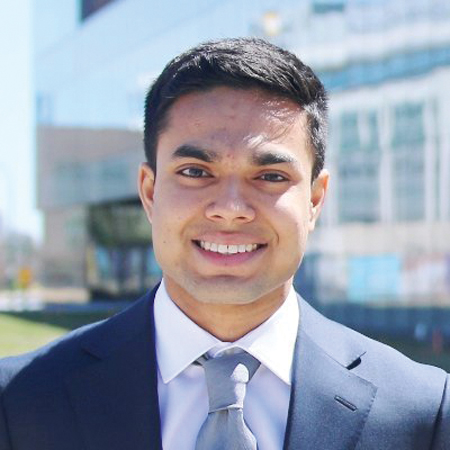 “Also, the American education system is seen as [superior]. Creative thinking, experiential-based learning, adaptability, and flexibility are not always the terms associated with the Indian education system. So, a sense of creating a better life for their children, even though it means intense sacrifices for themselves, very much motivates people to continue coming to the United States.”
“Also, the American education system is seen as [superior]. Creative thinking, experiential-based learning, adaptability, and flexibility are not always the terms associated with the Indian education system. So, a sense of creating a better life for their children, even though it means intense sacrifices for themselves, very much motivates people to continue coming to the United States.”
[Right] Dip Patel, founder of Improve the Dream, an organization that advocates for DREAMers—those who grow up as dependents of long-term visa holders but lose their legal standing as soon as they hit age 21.
Many believe that America also provides an atmosphere conducive to the beginning of a dream from scratch. Rekha Sharma Crawford, partner at Kansas City-based Sharma-Crawford Attorneys at Law, who has been dealing with complex immigration as well as naturalization cases for individuals, says, “I think many continue to think of America as the land of possibilities... it’s about hope. People in India perceive limitations on upward mobility and sense a strangled bureaucracy; so they find hope associated with order, that comes with manicured lawns and tidy streets, alluring. It is about what they perceive is possible on such a stage.”
A beacon of hope
The American healthcare system has taken a bad rap for being expensive, broken, and complicated. But the American experimental medicine and the possibility of preclinical research have also offered possibilities scarcely possible elsewhere, especially in India. NYC-based civil rights activist and founder of Riaan Research Initiative, Gurjot “Jo” Kaur, experienced it firsthand. She says, “Being an American, I have access to opportunities and privileges that most in the world do not have. This became particularly apparent when my eldest son Riaan, a beautiful four-year-old, was diagnosed with an ultra-rare and fatal genetic disorder called Cockayne Syndrome. We learned that the disease has no treatment and that Riaan faces a five- to seven-year life expectancy.”
However, Kaur’s devastating discovery did not mean giving up hope. She says, “We were fortunate to be able to launch a patient advocacy foundation and begin collaborating with scientists to develop a gene therapy for this disease. We've been working with scientists at UMass Chan Medical School, and they have now successfully treated mice with this disease. We are engaging with the U.S. Food and Drug Administration to continue the process of providing this treatment to children, including Riaan. We still have a long way to go. 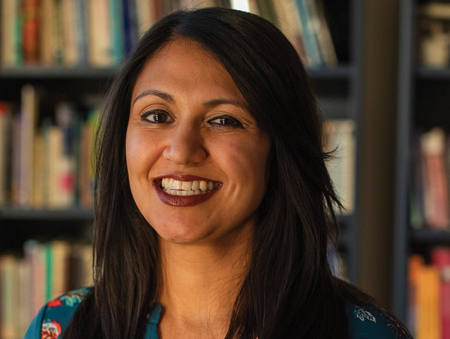 We are actively trying to move mountains but I'm acutely aware that these opportunities to save Riaan's life do not exist in many other places, and I'm grateful we have the chance to work with some of the top minds to try and get a cure developed. The generosity of our donors, as well as the opportunities to fundraise and advocate, become much more challenging outside of the U.S.”
We are actively trying to move mountains but I'm acutely aware that these opportunities to save Riaan's life do not exist in many other places, and I'm grateful we have the chance to work with some of the top minds to try and get a cure developed. The generosity of our donors, as well as the opportunities to fundraise and advocate, become much more challenging outside of the U.S.”
[Left] Amy Bhatt, author of Hi-Tech Housewives: Indian IT Workers, Gendered Labor, and Transmigration.
On the social paradigm too, America offers possibilities still unheard of in India. Based in Milpitas in California, Sujata Tibrewala realized this not too long after she landed in the U.S. as a young mother. Managing a toddler, while giving up on her professional dreams to advance her husband’s new work opportunity in America, began taking a toll on her relationship. She says, “I walked out of my house in the middle of the night with my toddler. I shifted to the Bay Area, looked for a job, and tried to rebuild my life on my own. I could do all this because somewhere I knew that the U.S. would provide me with facilities like women’s shelters or transitional housing to survive domestic troubles if the going got too tough. Back home in India, it would have been taboo and I would have been regarded as a pariah to attempt this. Years later, even after my domestic situation has sorted itself out, I have never forgotten the power of getting help when you want it. It may be something that Americans take for granted but not me—a woman from a small town in patriarchal India.”
Racism and revolutions
Despite being the most qualified and economically well-off minority, Indians in the U.S. have also been easy targets of hate crime. Last year, a study from The School of Public Health at Texas University highlighted that racial and ethnic discrimination is a regular occurrence for 3.5 million South Asians living in the United States. Research led by the director of the Center for Health Equity surveyed Indian-origin adolescents who said that discriminatory comments on Indian culture, language, and religion start in elementary school. Most Indians admit to experiencing one or many forms of racism living in America.
Kaur says, “Race and class play a significant role in determining quality, and even quantity, of life. I'm reminded of the recent hate crime shooting of Hisham Awartani, a young Palestinian college student, in Vermont. I know his parents, who live in the West Bank, Palestine, expected that their child would be safer in the U.S. than back home, but sadly that was not the case.”
But sometimes, the stories of racism in America also come with the sprouting of revolutions. Back in 2007, Gurinder Singh Khalsa was stopped at the Buffalo Niagara International Airport. He was asked to remove his turban and was dragged out of the airport when he refused to part with the article of his Sikh faith. When Khalsa was told that he would receive the same treatment at every American airport, he drove to Canada and 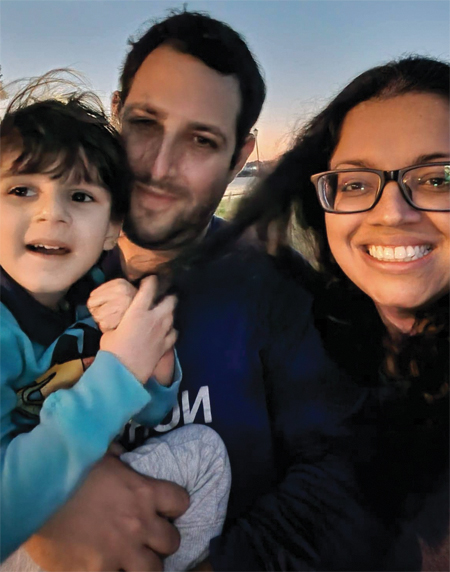 gave an interview about the incident. The incident sparked interest. He met some Congressmen who advised him to initiate a petition. He traveled across the U.S. to get signatures of people asking the TSA to remove that rule. Instead of the required 20,000, Khalsa was able to secure 67,000 signatures, thus forcing TSA to consider the rule of asking Sikhs to remove their turban during airport checks. He admits that a policy change initiated by an immigrant was only possible in America.
gave an interview about the incident. The incident sparked interest. He met some Congressmen who advised him to initiate a petition. He traveled across the U.S. to get signatures of people asking the TSA to remove that rule. Instead of the required 20,000, Khalsa was able to secure 67,000 signatures, thus forcing TSA to consider the rule of asking Sikhs to remove their turban during airport checks. He admits that a policy change initiated by an immigrant was only possible in America.
[Right] Gurjot “Jo” Kaur with her husband and her son Riaan.
The challenges, though not easy, are often worth confronting. Jo Kaur recalls her own experiences. She says, “We moved to Florida in 1989 from Punjab. My parents faced obstacles that many new immigrants to America experience: my dad who wears a turban and maintains an unshorn beard as part of his Sikh faith had difficulty finding high-paying jobs despite his educational and professional background and faced extensive workplace discrimination. His faith was more important to him, so he took the first job he could find that didn't demand that he cut his hair or remove his turban: working at a convenience store. My parents were never able to move much beyond modest paying jobs because of discrimination and capitalist exploitation despite working extremely hard their entire lives.”
Kaur, though, is also quite cognizant of the advantages and privileges of living in the U.S. “In my own family, we recognize the opportunities we have received here. My sister, who is deaf, attended general education classes made possible with sign language interpreters and went on to obtain a master’s degree which would have likely not been possible for a deaf person back in Punjab and many other places.
She surmises, “Given the growing threat and danger of white supremacy and fascism worldwide, we can never rest too easy and we cannot ignore the struggles of other groups. Everything is connected. It's one group now, it may be another group next. We cannot realize the American Dream until we liberate all groups from oppression and violence.”
The dream endures
Most immigrants believe that some version of the American Dream will always exist depending on what sacrifices a person is willing to make. Crawford says, “The American Dream is still alive and well, it’s just waiting on it that has become a nightmare.” Political and social observers also feel that the American Dream for Indians, despite its odds, continues to flourish. Mishra says, “If we were to do a macro-analysis, we would see that when we think of India in its current moment, a lot of people are finding it harder to make a good life. The job situation is not too great, people struggle to get into good colleges, and the pollution levels are atrocious. All these elements affect a good life and there is anxiety. People do feel that once they migrate, something will come out of it. So, while historically there have been phases of ups and downs in immigration, there seems to be no indication of a slowing down of Indian migration to the U.S.”
Zofeen Maqsood is a U.S.-based journalist who writes extensively on millennial trends and expat issues. She has contributed to some of the biggest publications and websites in India and in the U.S.
Enjoyed reading Khabar magazine? Subscribe to Khabar and get a full digital copy of this Indian-American community magazine.
blog comments powered by Disqus










